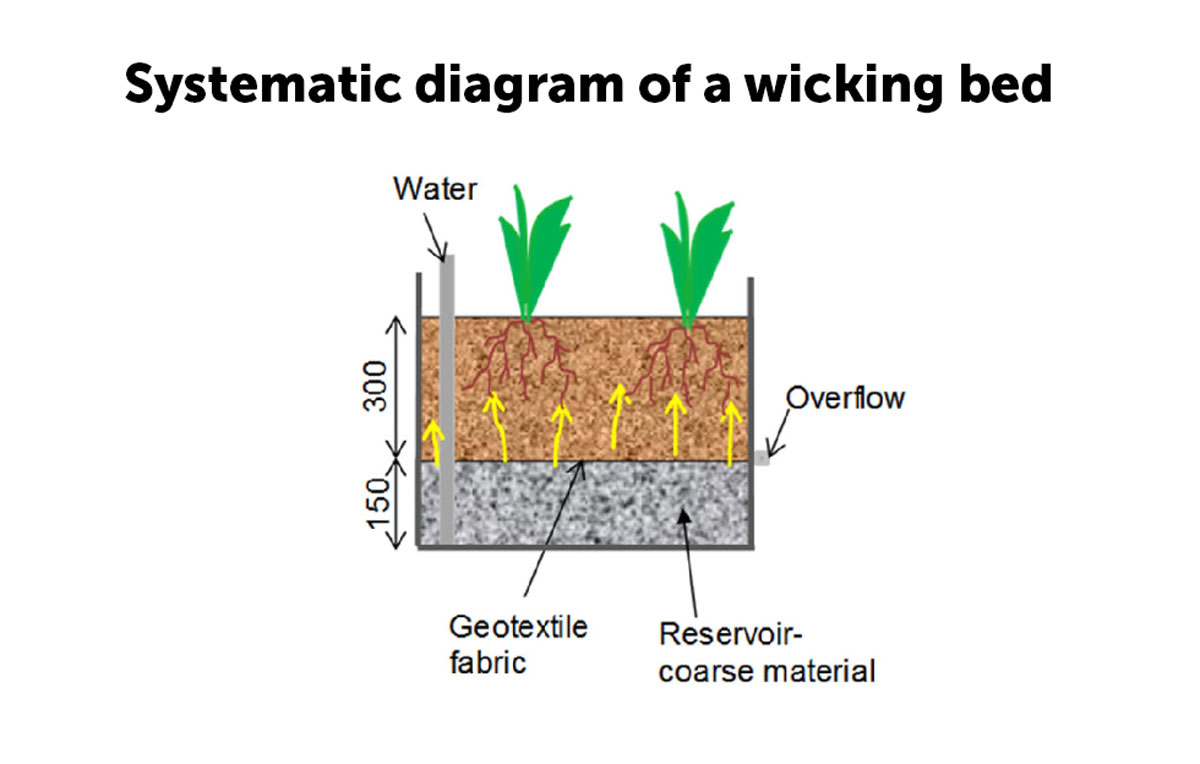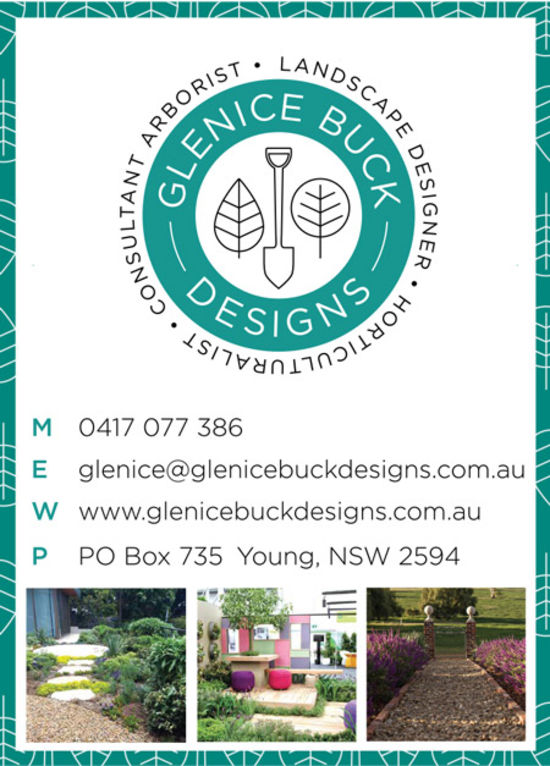Following on from the Edible Garden Series creating an edible garden part 6, I thought we could focus on another way of growing vegetables – that is by growing them in wicking beds.
Wicking beds use the principals of wicking to water the plants rather than traditional overhead hand watering or an irrigation system. In Australia, we use the term “wicking”. In America, they call it “sub-irrigation”.
Water wicking has been around for thousands of years, with some archaeological evidence of gardens being irrigated by capillary action dating back over 2,500 years to near the City of Old Jerusalem.
A wicking bed in summary is a raised garden bed with a water reservoir below the level of the soil. Water is drawn up from the reservoir to the soil above via capillary or wicking action. The level of moisture in the soil is maintained. This then reduces the amount of water used overall. It also ensures that the moisture is evenly distributed throughout the bed. The capillary action means the small pores within the soil are acting as capillaries and drawing the water upwards through the soil layers from the reservoir to the roots in the soil above. Due to this upwards draw, there is also a large reduction of the amount of water leaching out of the soil or draining through the soil as the water is stored in the base of the bed.
Some of the main advantages of growing plants in wicking beds are the monetary savings with less water use, this in turn means a lower impact on the environment. Garden beds will require less hand watering therefore the beds can be left unattended for longer periods of time. The roots of the plants will grow down deeper in the soil as they will be attracted to the underground water reservoir – this means plants will develop bigger, stronger root systems and this will lead to more productive and healthy plants.
Having a contained system, all the nutrients/fertilisers applied to the soil will remain within the closed system. There will be less loss of water due to evaporation as the water is coming from below ground and it is not sitting on the soil surface. There will also be less likelihood of over watering as you can see where you need to fill to a certain level in the reservoir and that is it.
You will have to ensure that in time of heavy rain the systems do not become water logged and you need to ensure you use plants that do like that level of constant moisture.

There are normally three distinct areas inside a wicking garden bed.
They are:
- the water reservoir
- the area of saturation
- the area of root growth
Depending on the type of wicking bed system you use, the main functions of each of these zones are:
- The water reservoir – this is designed to store water – depending on the size, this may be for a few weeks. It will also hold any of the nutrients/fertilisers that will run off. You need to ensure this zone has the correct depth as it needs to be deep enough to store the water for the capillary action to occur, however it can’t be so deep that the water does not get used efficiently enough or quickly enough as if it is left standing it may have the potential to encourage algae growth
- The area of saturation – this is the cross section at where the water reservoir will overlap with the soil. This is the area where the water will move through by the capillary action effect.
- The area of root growth – this is the area where you will plant your plants and their roots will grow. Ideally this will be around 250 – 300mm in depth of organic good quality planting soil. You will also need to ensure that the water and air in this zone are suitable for plant growth.
When you do plant out the wicking beds, you need to remember for the first 4 -6 weeks you will need to do above ground watering whilst the plant roots get themselves established in the soil material as the capillary action won’t be enough to keep tiny roots watered.
There are a variety of ways to make wicking beds. If you would like to try and make them yourself, you just need a container that has the capacity to hold water. You also need to be able to drill/cut into the container to insert ag line, pipe work etc.
One idea for the containers would be the plastic crates that are called 1000 litre shuttles or an IBC (Immediate Bulk Containers). You can try and buy this new or you may be able to get them second hand. Typically, they can hold chemicals for herbicide/fungicide etc or wetting agents however some of the ones which have held less toxic materials (eg a wetting agent) can actually be cleaned with a specific disinfectant agent that is acid based and this actually cleans them out enough to be able to be used for wicking beds.
Alternatively, probably the safest option would be to try a food production company such as olive oil or wine producers – ideally if they have come from carrying drinkable liquids you would not have any issues with toxicity. When I have seen the IBC used for wicking beds, they have been cut in half and then sat on a raised platform with some sort of timber slats around the sides to make them look a bit more decorative.
You will need to then purchase some hardware to make the containers functional as a wicking bed. Materials needed would be a water inlet pipe. This is where you will fill up the water to the bed, this will need to be capped off. You need a drainage line which will run along the base of the container which will distribute water evenly across the bed. You will also need an overflow pipe. This is usually located below the soil surface and will prevent the water level from rising too high into the root growth level – this will be capped.
The loose materials you will use within the container would typically be a coarse drainage layer that sit in the water reservoir, this could be scoria or pebbles. You need to have a geotextile layer of fabric placed between the water reservoir and the growing medium to prevent the finer particles from blocking up the drainage layer. Water Ups Down Under www.waterups.com.au actually have a guide to using IBC here https://www.waterups.com.au/wp-content/uploads/2020/02/Info-Sheet-IBCs-20Feb20.pdf
An alternative to making your own beds would be purchase a prefabricated wicking bed that includes everything you need. One company that I highly recommend would be Water Ups from Down Under. https://www.waterups.com.au/ or head to this video for more explanation https://youtu.be/9TmEf_8wE0s
The WaterUps from Down Under® sell a water wicking cell along with garden beds as full kits from their website. They are an Australian designed and manufactured product that can be used in a wide variety of watering situations. The wicking cells are modular in nature to allow them to be custom fitted to the shape and size of any growing environment large or small. If need be, they can also be cut or shaped to allow them to work in all manner of growing containers, gardens or landscape designs. They are manufactured in western Sydney from recycled plastic (by Reln who also manufacture the Tumbleweed garden range of garden and food waste management products).
Up until the launch of WaterUps®, the main method of constructing wicking beds was to use river sand or scoria. WaterUps® have proven to be a much more cost effective and commercially viable method of constructing wicking beds. They also operate more efficiently. The WaterUps from Down Under® are being used in a wide range of locations and in different formats. For example, in July of this year, Bathurst City Council are planning to install a trial of 10 raised garden wicking beds with combined green waste compost systems. WaterUps® will allow the gardens to survive despite level 5 water restrictions and the beds will assist with and compliment a range of council programs including “Love Food Hate Waste.”
North Sydney Council are currently installing WaterUps® cells to irrigate streetscape planters to help gardens survive and reduce the water and maintenance needs to help “green” a major traffic route. The theory behind the wicking bed system will help plants grow in a variety of locations where they may not have survived previously or the cost of watering them may have been limiting to their placement. If you have any areas of gardening you would like me to focus on in upcoming articles, please let me know. If you would like to read the total Edible Garden Series in one go you can subscribe to my free newsletter by going to www.tinyletter.com/glenicebuckdesigns or email glenice@glenicebuckdesigns.com.au or phone or text me on 0417 077 386.
Stay Connected
Subscribe
Get in Contact
Hilltops News to your inbox
Sign up now for the latest news from the Hilltops Area direct to your inbox.

